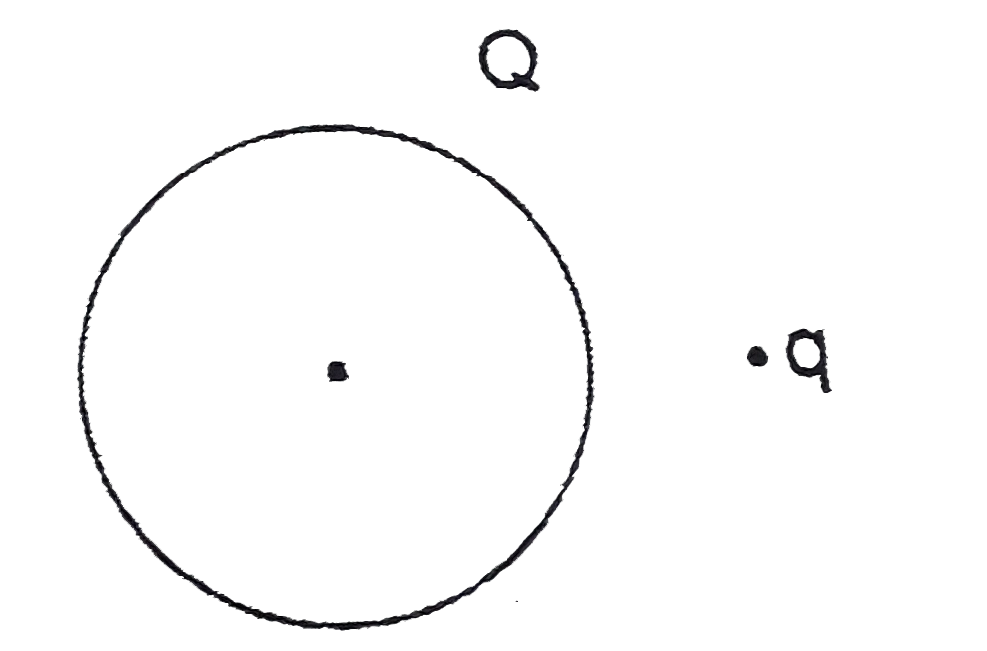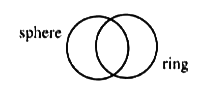A charge + Q is uniformly distributed within a sphere of radius R. Find the electric field due to this charge distribution at a point distant r from the centre of the sphere where :i 0 R
A charge + Q is uniformly distributed within a sphere of radius R. We have
Related Solutions
A charge , is uniformaly distributed within a sphere of radius R. Find the electric field, due to this charge distribution, at a point distant r form the centre of the spehre where :
(i) and
View SolutionA charge +Q , is uniformaly distributed within a sphere of radius R. Find the electric field, due to this charge distribution, at a point distant r form the centre of the spehre where : (i) 0 lt r lt R and (ii) r gt R
View SolutionA hallow metal sphere of radius R is uniformly charged. The electric field due to the sphere at a distance r from the centre:
View SolutionA hallow metal sphere of radius R is uniformly charged. The electric field due to the sphere at a distance r from the centre:
View SolutionA hollow metal sphere of radius R is uniformly charged. The electric field due to the sphere at a distance r from the centre
View SolutionA sphere of radius R, is charged uniformly with total charge Q. Then correct statement for electric field is (r = distance from centre): -
View SolutionA point charge +Q is located at a distance of r from the centre of an uncharged conducting sphere of radjus R. Find the electric potential of that sphere Find the electric field and electric potential at the centre of the sphere due to induced charges on the sphere?
View SolutionFigure shows a uniformly charged sphere of radius R and total charge Q. A point charge q is situated outside the sphere at a distance r from centre of sphere. Find out the following : (i) Force acting on the point charge q due to the sphere. (ii) Force acting on the sphere due to the point charge.
View SolutionFigure shows a uniformly charged sphere of radius R and total charge Q. A point charge q is situated outside the sphere at a distance r from centre of sphere. Find out the following :
(i) Force acting on the point charge q due to the sphere.
(ii) Force acting on the sphere due to the point charge.
 View Solution
View SolutionA non-conducting sphere of radius R is given a charge Q. Charge is uniformly distributed in its volume. The electric potential at centre and at the surface of sphere respectively are
View SolutionA non-conducting sphere of radius R is given a charge Q. Charge is uniformly distributed in its volume. The electric potential at centre and at the surface of sphere respectively are
View SolutionA non-conducting sphere of radius R is given a charge Q. Charge is uniformly distributed in its volume. The electric potential at centre and at the surface of sphere respectively are
View Solutionत्रिज्या R के एकसमान आवेशित (कुल आवेश =q ) कुचालक गोले के कारन विधुत क्षेत्र E का गोले के केंद्र से दुरी r के साथ विचरण का ग्राफ होगा -
View SolutionA hallow metal sphere of radius R is uniformly charged. The electric field due to the sphere at a distance r from the centre:
View SolutionCharge is distributed within a sphere of radius R with a volume charge density where A and a are constants. If Q is the total charge of this charge distribution, the radius R is :
View SolutionCharge is distributed within a sphere of radius R with a volume charge density where A and a are constants. If Q is the total charge of this charge distribution, the radius R is :
View SolutionThere is a hemispherical shell having charge Q uniformly distributed on its surface. Radius of the shell is R. Find electric potential and field at the centre (of the sphere).
View SolutionA charge q is distributed uniformly on a ring of radius R. A sphere of equal radius R is constructed with its centre at the periphery of the ring, Find the flux of the electric field through the surface of the sphere
 View Solution
View SolutionA charge Q is distribution over a metal sphere of radius R. What is the electric field and electric potential at the centre ?
View SolutionA hollow conducting sphere contains q charge uniformly distributed over the surface. Draw V-r graph, where r is the distance from the centre of the sphere.
View Solution
